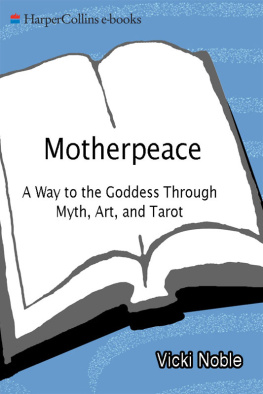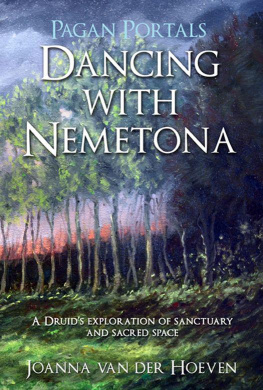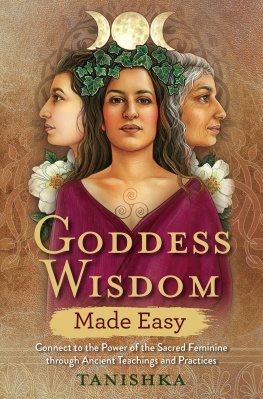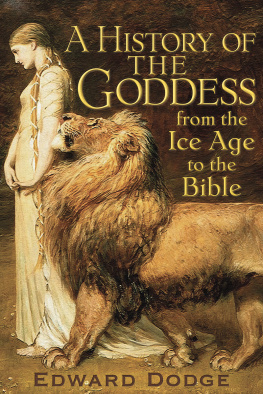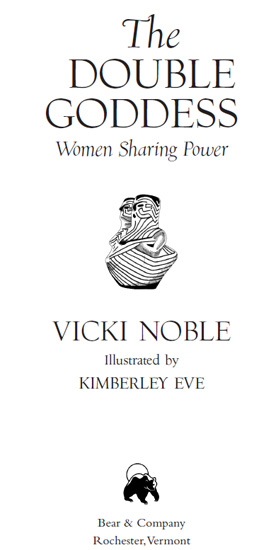

Acknowledgments
This book has taken ages to write, partly because of my travel and teaching obligations and the special needs of my adolescent son, but also because of the obscure nature of the material itself. Although there is bountiful evidencewhich I have done my best to gatherin support of my Double Goddess thesis, it is widely scattered among many different kinds of texts, museums, libraries, and archives, with many of the sources old, remote, out of print, hard to acquire, and patently expensive. I am grateful to have been living, until recently, in Berkeley, California, where independent bookstores (both new and used) still flourish: I have been especially helped by Shambhala and Black Oak Books, as well as the University Press Bookstore. And the University of California Library systemalthough floundering somewhatis still a fabulous resource.
Along this eight-year journey I have been mainly helped financially by private sponsors who took me under their wing by making pledges to support my independent research so that I could take the time to do it. For their substantial support during the early stages I would especially like to thank Susun Weed, Angie Thieriot, Beatrice Bowles, Samantha Lyons, B. J. Miller, Minerva Gow, Kyle King, Jaye Martin, Brenda Nicholson, Cristina Biaggi, Rita Pasotti, Katherine Neville, Tollie Miller, Carole Barlas, and the Vaughan Family Foundation. Thanks also to Jonathan Tenney, Sally Craig, Alev Croutier, Nancy Baer, Clare Luce Abbey, Caroline Drivers, and Elizabeth Comstock. Recently I am grateful as well to Gisken Crawford, Joan Poor, Sumedha Khanna, Donna Read, Starhawk, Stasi Martin Truyts, Jennifer Berezan, Faith Freewoman, Mary Ann Mierzwa, JoAnn Gunnarson, Hope Rhode, Susan McLaughlin, Shannon Morris, and Cindy Zamzow. My Webmistress Shawn Hancock even donated her time putting an excerpt of the book up on our site (www.motherpeace.com.)
I thank the Bogliasco Foundation for a fabulous month-long writing retreat in northern Italy in the fall of 1997, during which time I was able to explore the ancient Grimaldi caves, museums, and other sacred sites in the area, as well as acquire important texts published in Italy. I deeply appreciate Rita Pasottis support and affirmation of my work, for providing me with a wonderful trip around Tuscany in the spring of 1998 to visit Etruscan museums, and for taking hundreds of photographs along the way.
I am forever indebted to Jeannine Davis-Kimball for her work with Amazon excavations and her generous invitation for me to go on an investigatory trip to Russia in 1997 to visit museums and archival collections and meet with Russian archaeologists; the trip and her mentoring have been absolutely invaluable, right up to the publishing deadline when she critically read several pertinent chapters. Likewise I want to thank my friend Miriam Robbins Dexter for her excellent in-depth, rigorous, and supportive reading of the text before I sent it to the publisher for final viewing. And thanks to Will Roscoe, who offered valuable suggestions for the section on Two-Spirit people.
With regard to Tibetan Buddhist material, in addition to my passionate eclectic studies over the years, I am indebted to Tsultrim Allione for introducing (transmitting) several dakini practices to me beginning in 1995, and Tulku Thubten Rinpoche for his insightful and profound support for my work in general. Thanks also to my fabulous guide in Crete, George Spiridakis, who has deepened my research by believing in my theories, sharing his own in-depth knowledge of the ancient women-centered culture there, and escorting my tour groups off the beaten track for homecooked food and inspiring interactions with wonderful local people. With George leading the way, we have climbed to several sacred mountain shrines and explored most of the important ancient caves that honeycomb the island. Hiking almost to the top of Mt. Ida to enter the Kamares Cave, where a Bronze Age High Priestess left her stone offering table four thousand years ago, I count as one of the accomplishments of my life.
I am grateful to several other friends who were willing to read and comment on various drafts of the book: Barbara Higbie, Elinor Gadon, Ubaka Hill, Cristina Biaggi, Krissy Keefer, Mary B. Kelly, and especially Jennifer Berezanwho, after all, shared with me the initial aha in regard to the many Double Goddess figures we saw in museums around the world as we traveled together from 1991 through 1994.
From Australia, Chris Sitka generously shared much more documentation than I was able to use in this book. Her well-developed theories and inspired, scholarly understandings of the Double Goddess as images of prehistoric and original lesbianism deserve publication in their own right. And Im grateful to the German author Gabriele Meixner for generously sending me a copy of her Frauenpaare (Womenpairs). I only wish my German were better; in that regard, thanks to my friend Hanna Soule for translating sections of Meixners book, so that I could see how our two approaches intersected.
But for some vigilant friends and colleagues, I would have never found some of the images in the first place, since they are rarely indexed under Double Goddess. Thanks to Constance (Nieburg) Tippett for calling my attention to a 1967 copy of Horizon Magazine featuring on the cover a Double Goddess ceramic pot from Hacilar, and then when she saw how interested I was, just mailing me her copy of the valuable out-of-print magazine.Thanks also to Willow La Monte for the slide of a Double Goddess I hadnt seen from Marija Gimbutass collection from Achilleion in Greece; to Karen Vogel for bringing me a copy of Sculpture Magazine with the first published images of the plaster Double Goddesses from Ain Ghazal; to Layne Redmond for sending me an image from the Metropolitan Museum; to Max Dashu for the image from Lithuania, and to Mary Lou Miller for a variety of Amazons and Maenads from Greek vase images.
Thanks again to Susun Weed for finding my inspired illustrator, Kimberley Eve, whose fresh drawings have given a lively expression to the ideas Im sharing in this complex book. Kimberleys responsiveness and positively agreeable presence in relation to the text and my challenging timetable have been a blessing to me. At a midpoint in the process, my friend Sandy Boucher worked as a clear-headed and compassionate freelance editor on the book, contributing her astute sense of the written word along with her personal commitment to feminist spirituality. Our extended back-and-forth editorial encounter was a truly successful exercise in women sharing power. And at a crucial transitional moment, Willow La Monte made a momentous intervention in the way of a generous unsolicited donation that allowed the book to be completed. Since the fall of 2001, the good people of Inner Traditions Bear & Company have wholeheartedly contributed their knowledge and creativity to the final birthing of my book, and Ive enjoyed our collaboration very much.
I take full responsibility for whatever errors are present in these pages. Eight years seems a long time for me to work on a book, and if I have neglected to mention anyones name, it may be because your contribution to this effort occurred years ago. I apologize for my inadequate memory and hereby thank you for your help. Likewise, it is difficult for any scholar to stay on top of the archaeological material, since every excavation changes the known facts by adding data that must be integrated. I rely a lot on older books, because they dont have the antifeminist agenda that has appeared in archaeology as a backlash to the 1970s womens spirituality Goddess vision. More recent scholarly works benefit from the discoveries of carbon-14 and tree-ring dating methods, which have made dating and chronologies more technically reliable at the same time that many of their doctrinal antifeminist interpretations seem skewed and even patently wrong. I have attempted to keep the best of the older nondefensive assessments of the pervasiveness of the ancient Great Mother while utilizing the most up-to-date research in my dates and places.
Next page

